-
Car Reviews
- All reviews
- Midsize SUVs
- Small cars
- Utes
- Small SUVs
- Large SUVs
- Large cars
- Sports SUVs
- Sports cars
- Vans
Latest reviews
- Car News
-
Car Comparisons
Latest comparisons
- Chasing Deals
Nissan’s latest small SUV drives like a pure EV but travels nearly 1000km in a single tank. So what’s the catch?
The third-generation Nissan Qashqai small SUV first landed in Australia last year and did so with a promise that a fuel-sipping hybrid system would follow soon after.
In 2024, this hybrid system – known as E-Power – has now arrived, becoming the second vehicle behind the X-Trail midsize SUV to adopt the drivetrain locally.
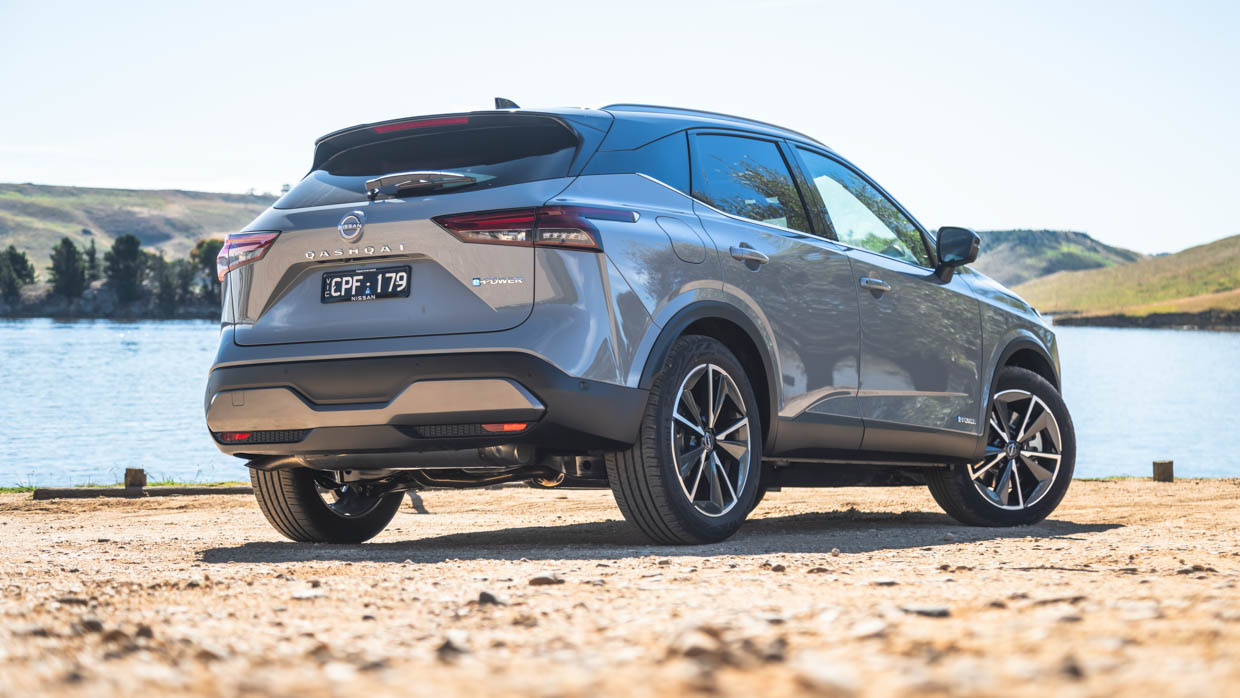
Here at Chasing Cars, we’ve been fairly impressed with the E-Power system through our long-term testing of the X-Trail, with advantages such as its relatively frugal fuel consumption and cabin refinement making it a worthwhile investment over that model’s base petrol variant.
Nissan is looking to replicate this success with the Qashqai, though sadly the E-Power system remains restricted to the top-spec Ti grade, despite being available in lower grades in markets such as the UK.
This, in turn, reveals the Qashqai E-Power’s biggest problem: it’s $51,590 starting list price, working out to just under $55,000 driveaway once you’re on the road.
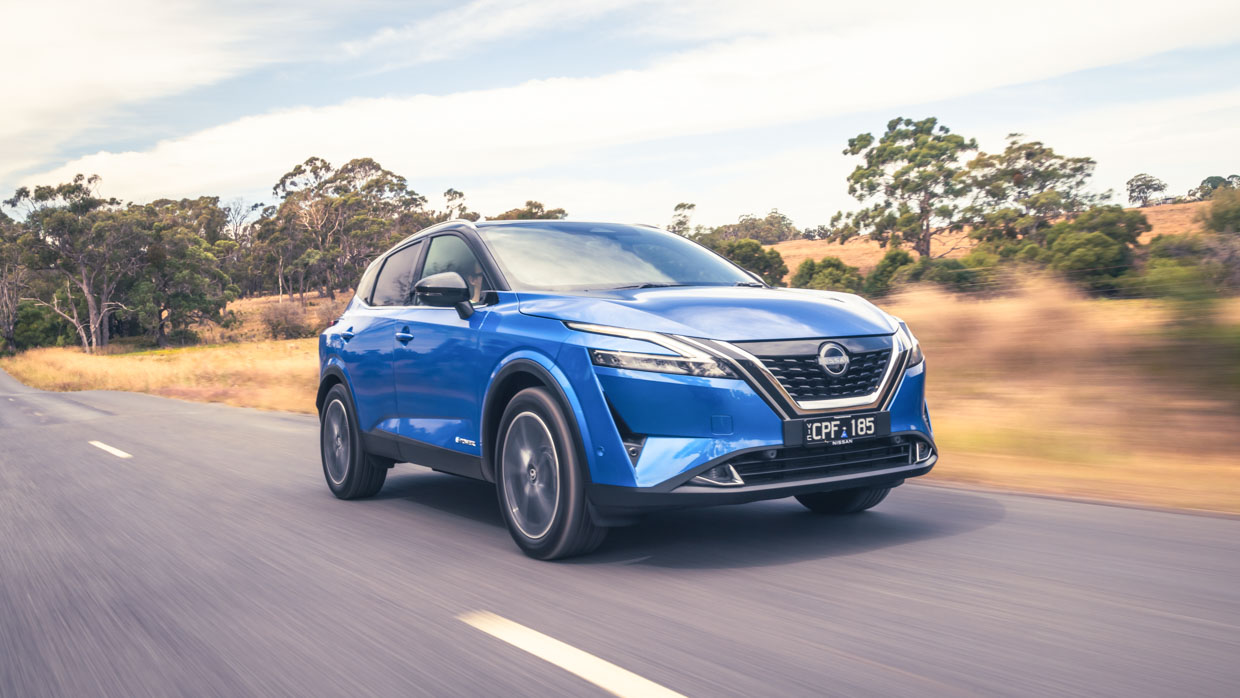
In recent years, carmakers have begun to adopt hybrid systems more widely in the small SUV segment with the newly replaced old-generation Toyota C-HR leading the charge for many years, and with models such as the new Hyundai Kona hybrid offering a keen starting point of just $36,000 before on-road costs.
Other notable examples such as the Toyota Corolla Cross and the Kia Niro see their hybrid models start at $36,480 and $44,930 respectively.
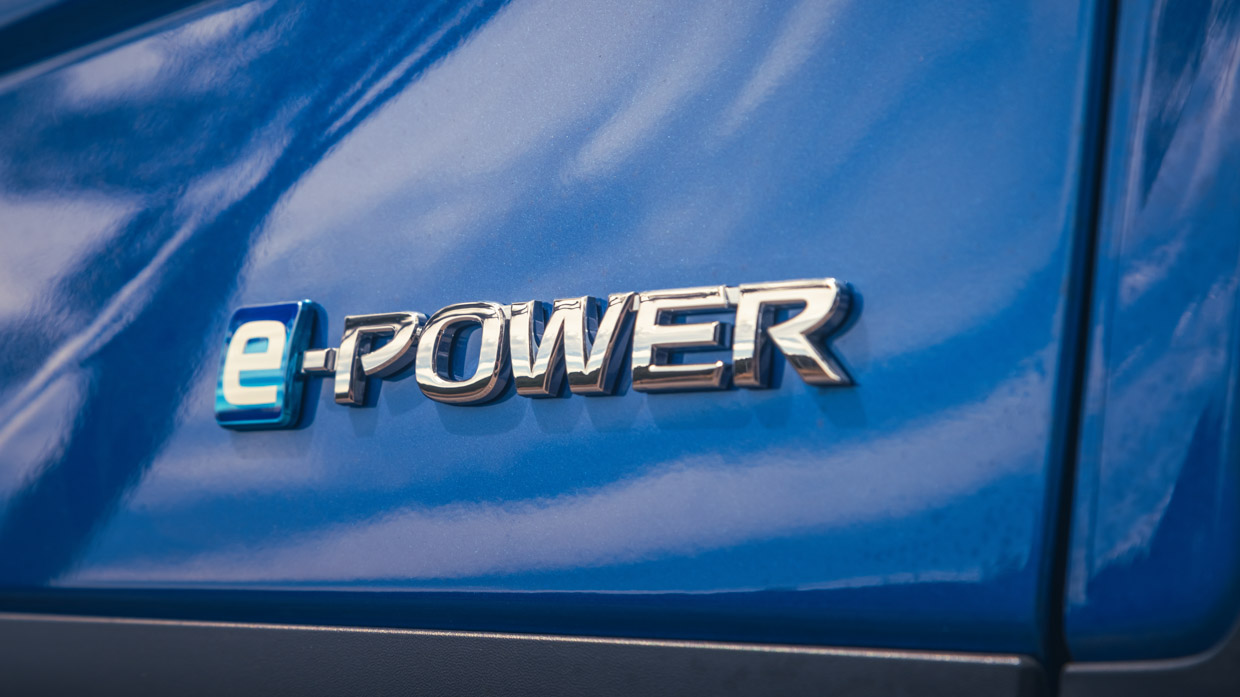
However, unlike these alternatives the Qashqai is actually quite unique, with Nissan’s small SUV better thought of as an EV with a very, very small battery, with the 1.5L petrol engine under the bonnet constantly generating electricity for the electric motors.
This engine has no direct connection to the wheels unlike hybrid systems offered by Honda, Toyota and Hyundai.
So with its unique take on hybrid technology and its expansive feature list, can the Qashqai Ti E-Power back up its confronting price tag? Let’s start by looking at what it has to offer.
As the E-Power option is only available in the top-spec Ti grade, the list of included features are fairly lengthy, as you would expect for the price point.
These include:
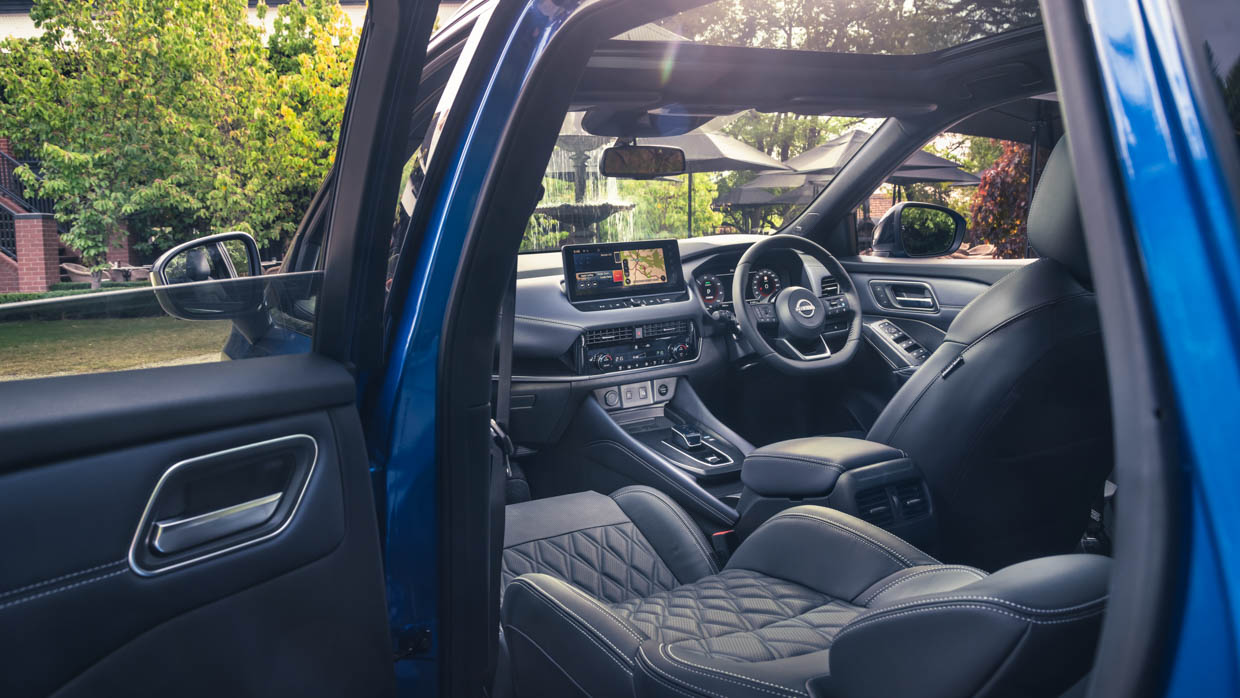
In terms of features unique to the E-Power variant, the electrified version sports a unique front grille, active noise cancelling, a slew of specific badges and an ‘Approaching Vehicle Sound’ (or AVS) system to warn pedestrians your very quiet small SUV is moving nearby.
Nissan has thrown out all but the kitchen sink as the Qashqai Ti E-Power features wise, though it would be nice to see wireless phone mirroring made available for Android phones, as we’ve seen from Nissan in its vehicles overseas.
If you’ve already driven Nissan’s newest small SUV, the Qashqai E-Power experience won’t bring many surprises. It’s focused, fun and easy to punt around town, while remaining surprisingly relaxed on the highways for such a compact vehicle.
The E-Power system improves the driving experience of the Qashqai in a number of ways, and that starts with performance.
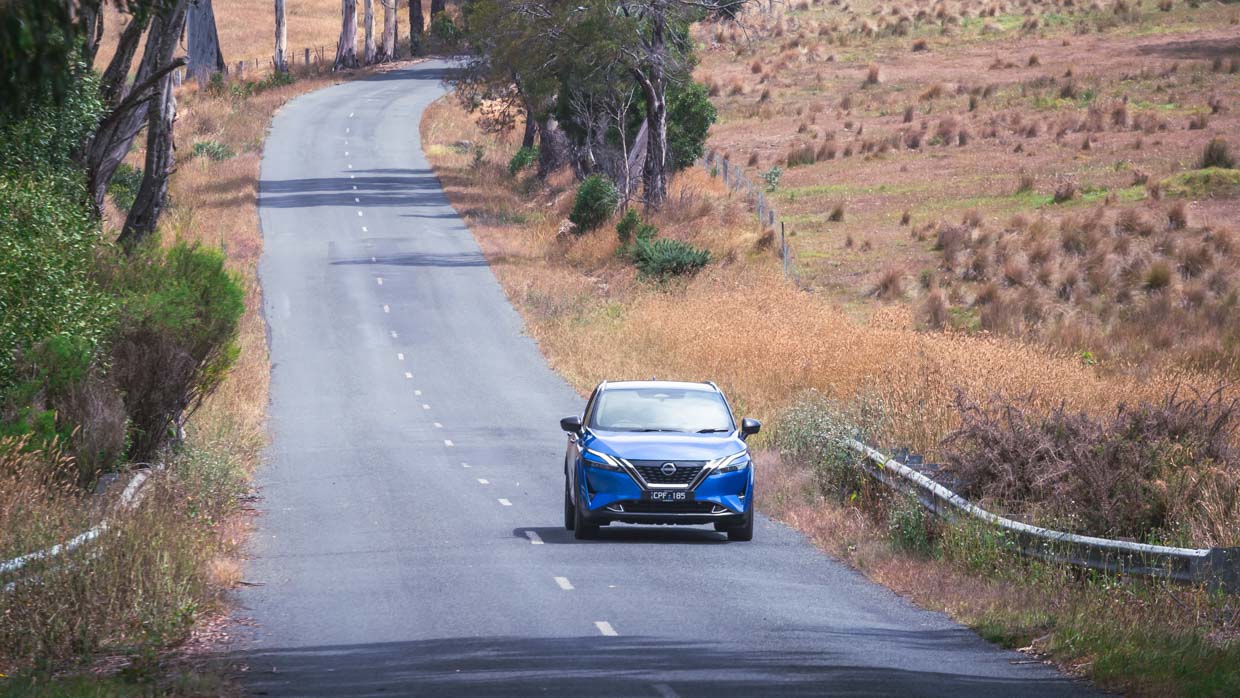
All of the propulsion of the Qashqai E-Power is done through the 140kW/330Nm electric motor mounted between the front wheels. That’s a healthy serving of more shove compared to the 1.3L turbo-petrol four-cylinder engine in the regular model, which puts out 110kW/250Nm.
Given that the motor is electric, that peak torque is delivered from a standstill, and this means the Qashqai E-Power is very competitive at the traffic light drag race so common in east coast urban environments.
E-Power enthusiasts – I’m sure there are at least a few – will note the front motor is down 10kW compared to the one fitted to the X-Trail. Unlike its larger X-Trail brother, there is no motor at the rear, making the Qashqai front-drive only, just like the base 1.3L petrol.
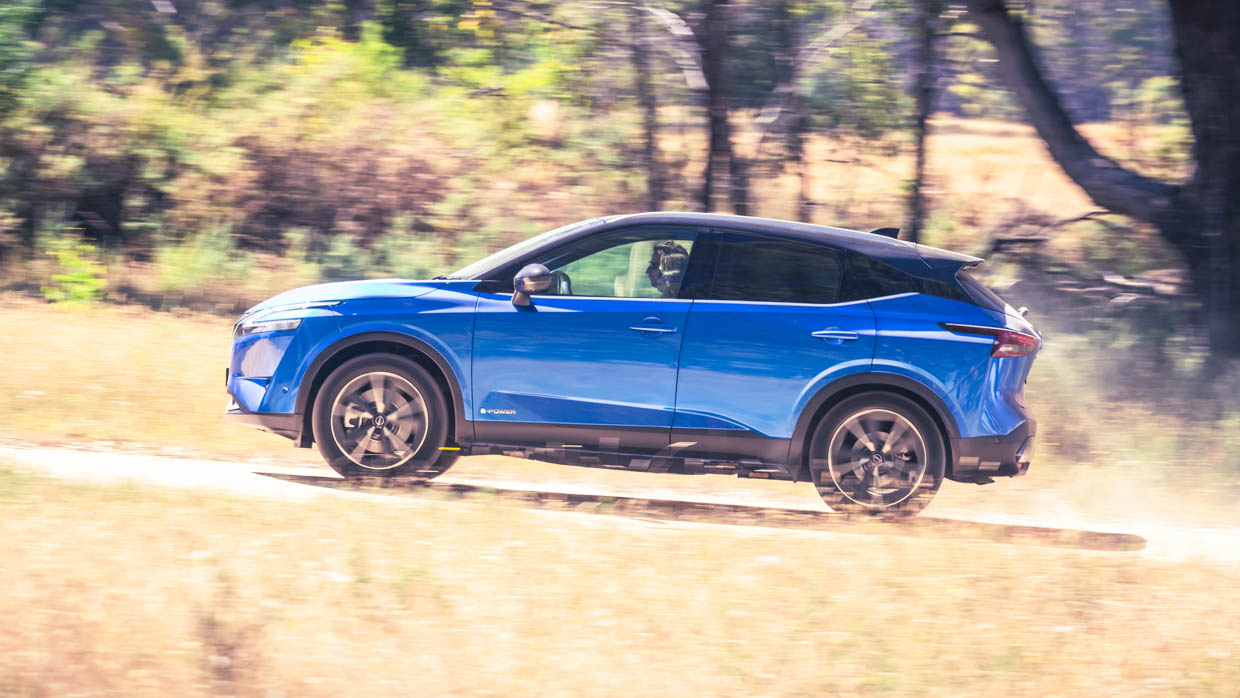
Backed by active noise cancelling, the Qashqai E-Power is noticeably quieter than the pure-petrol version, and perhaps even quieter than the X-Trail version.
This is likely down to the lower demands put upon the 1.5L turbocharged three-cylinder generator in the Qashqai given the model’s lower weight and just a single motor to feed electricity too.
Those who loathe CVT transmissions should also note this is done away with in the Qashqai E-Power format, which features no transmission in any traditional sense.
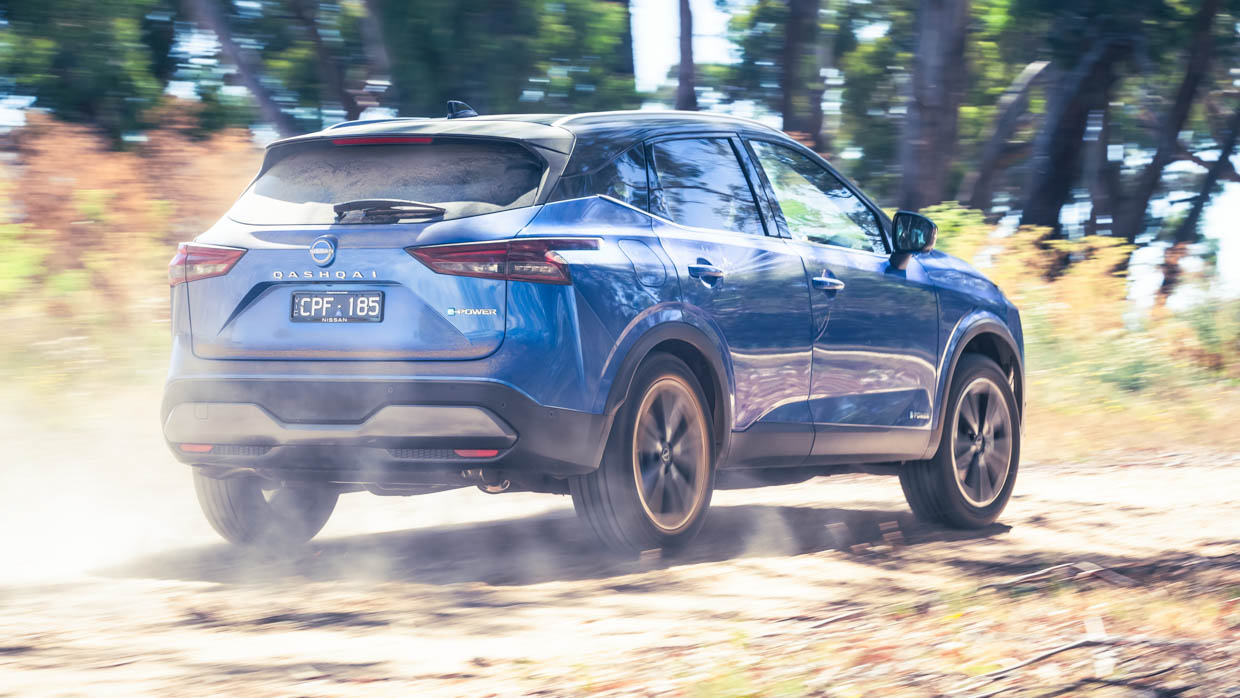
As a result, the Qashqai is a bit quieter than many of its hybrid rivals that often incorporate loud and clattery naturally aspirated engines and CVT transmissions, a combination that makes for a less than ideal refinement.
In our initial review of the Qashqai petrol last year, we expressed concern over the variant’s ride quality being overly firm. In later testing with the ST+ (on smaller 18-inch wheels) it was found to be far more acceptable.
Strangely enough, despite adding an extra 204kg to the 1728kg kerb weight when adding E-Power, the electrified model wears the same 19-inch alloy wheels as the regular Ti.
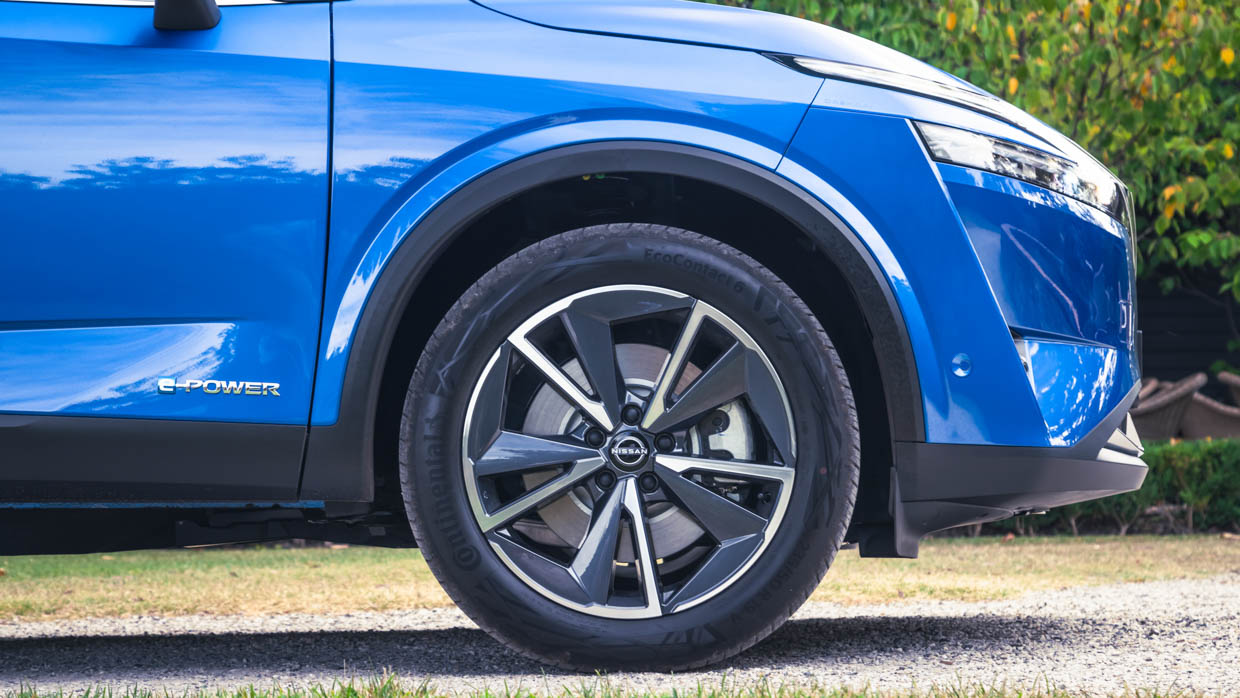
In the first half-day drive leg of the Qashqai at its Australian launch event, we were less than impressed with the comfort levels and found it to be overly harsh.
After some fiddling with tyre pressure (that had skyrocketed during a Melbourne heatwave), the ride was much improved, though some underlying firmness and unnecessary fussiness still lingered.
The end result, though, is not a significant negative for the Qashqai, the comfort and control of the small SUV isn’t what I’d call ‘poor’ just not as good as it could be. This is likely owing to the significant reengineering Nissan says it has done on the E-Power variant to account for its extra heft.
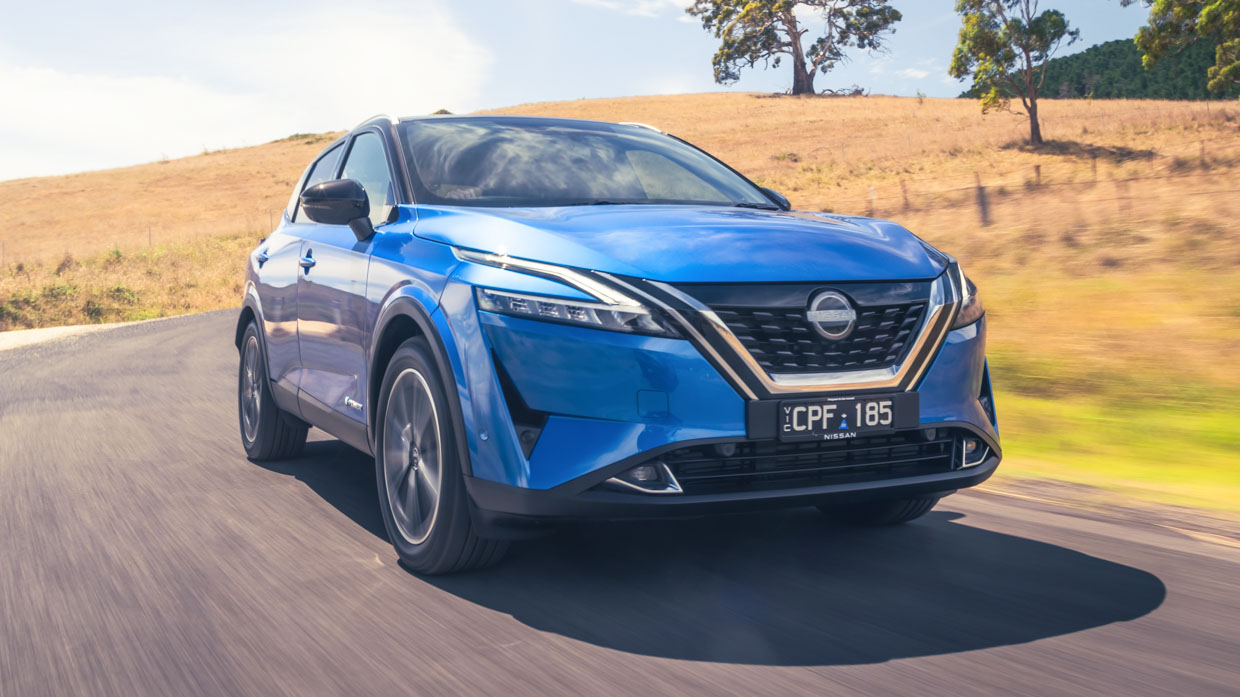
In saying that, the X-Trail E-Power is generally more comfortable in all-but the Ti-L grade (that wears huge 20-inch wheels) and rivals such as the Toyota Corolla Cross will likely be more comfortable around town.
We’ll investigate further once the Qashqai E-Power makes its way to Chasing Cars HQ in Sydney for further assessment.
Some car interiors are designed with usability at front of mind, others focus on style. In rare cases, we get a nice mix of both and the Qashqai is one such car.
Though your definition of what counts as contemporary may differ from my own, the Qashqai brings a nice mix of Japanese conservatism with a bit of European styling thrown in, what with its pairing of 12.3-inch displays (one for multimedia, another for the digital gauges), streamlined layout and its cute little shifter.
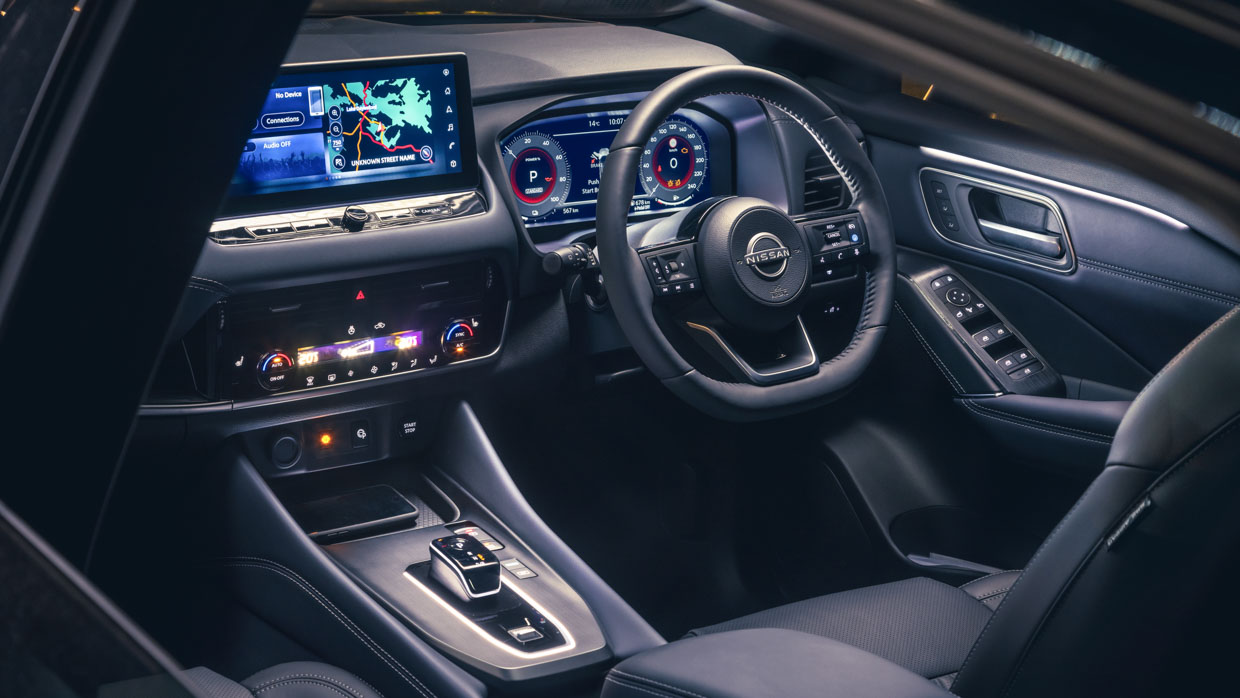
The colour palette is a bit drab however, and I’m not sure Nissan’s blue-black trim mix matches as well as its designers think it does, as once you throw in a different exterior paint shade like red, it starts to clash.
Some elements do work well through. Gloss black material use, which I generally consider a down-mark due to its poor durability, is generally kept to a minimum.
High-wear locations such as around the centre console feature a fake brushed aluminium-type plastic, which sounds tacky but looks lovely in person and beats the often overused, aforementioned alternative.
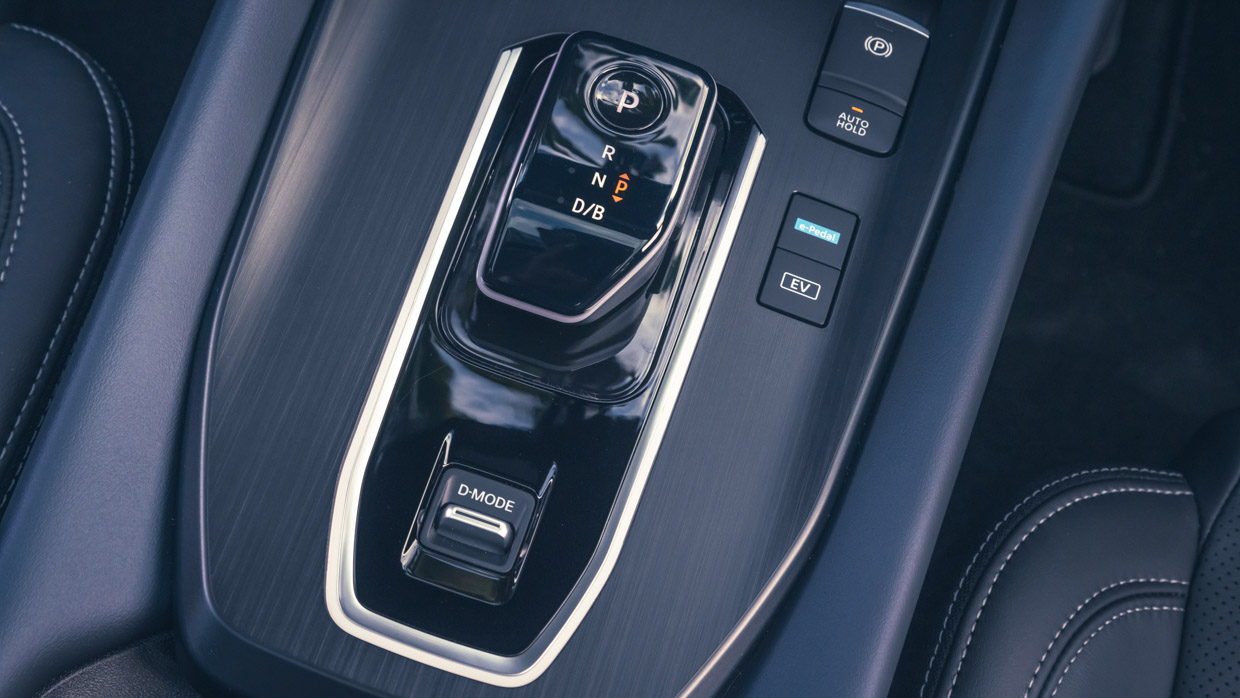
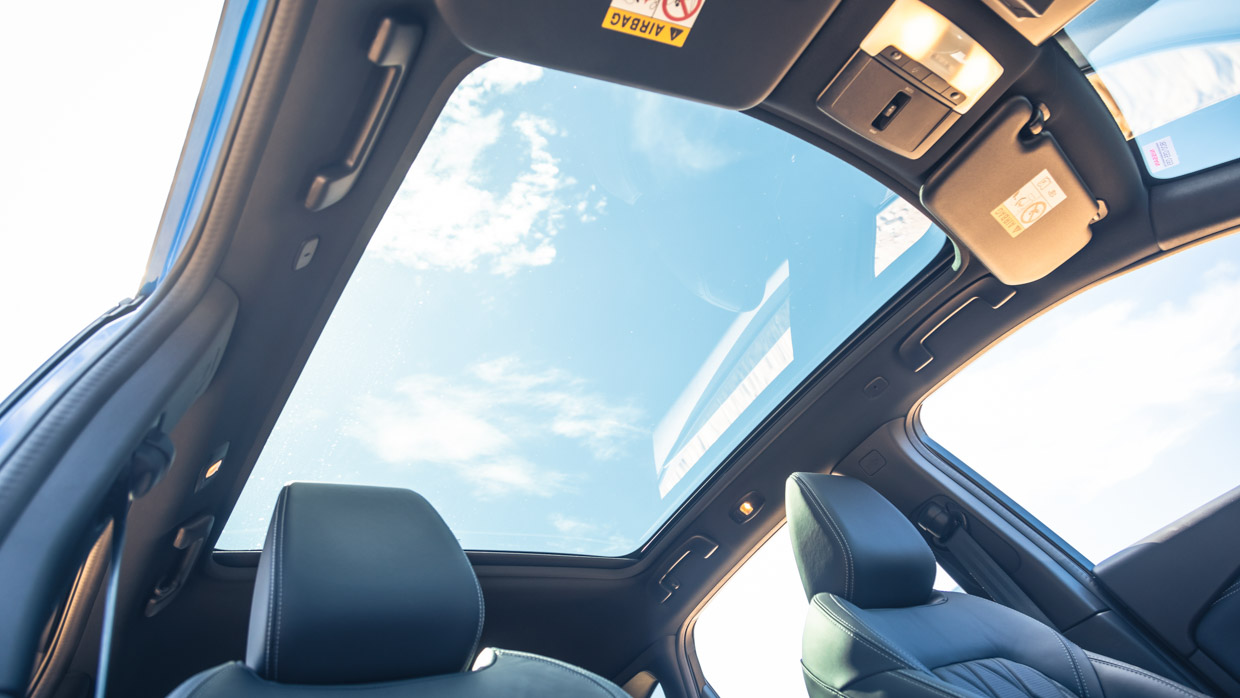
Visibility is overall pretty solid in the Qashqai, with the wide-opening panoramic sunroof creating an airy feel during the day. However, the roof doesn’t open.
Up front, the seats are dressed in quilted leather and each feature eight-directions of adjustment including four-way lumbar to help you find tune comfort and support.
It’s noteworthy that the front passenger is treated to the same levels of seat adjustability as the driver, which is rarely the case in small SUVs.
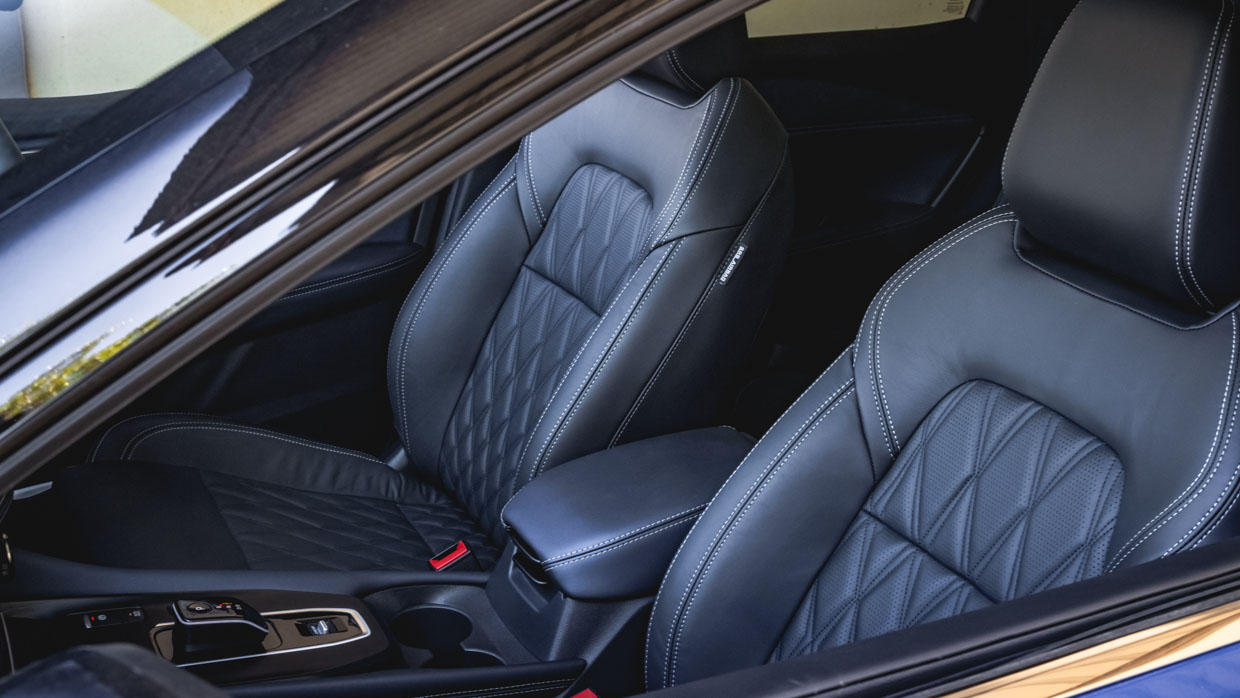
The seats themselves are perhaps a touch firm but have a good underlying level of support and after a day or driving I felt plenty refreshed. There is also a massage function but in practice this left more like a curious poking from a toddler in the backseat than a relaxing experience. Thanks but no thanks, Nissan.
In terms of multimedia, the 12.3-inch screens are relatively crisp and are a good size, though the upper echelons of the massive touchscreen can be hard to reach from the driver’s side.
Situated below this is an array of climate control buttons so that adjustment doesn’t require any fussing about in the touchscreen, with separate buttons for nice bonuses such as the heated steering wheel and individual front seats.
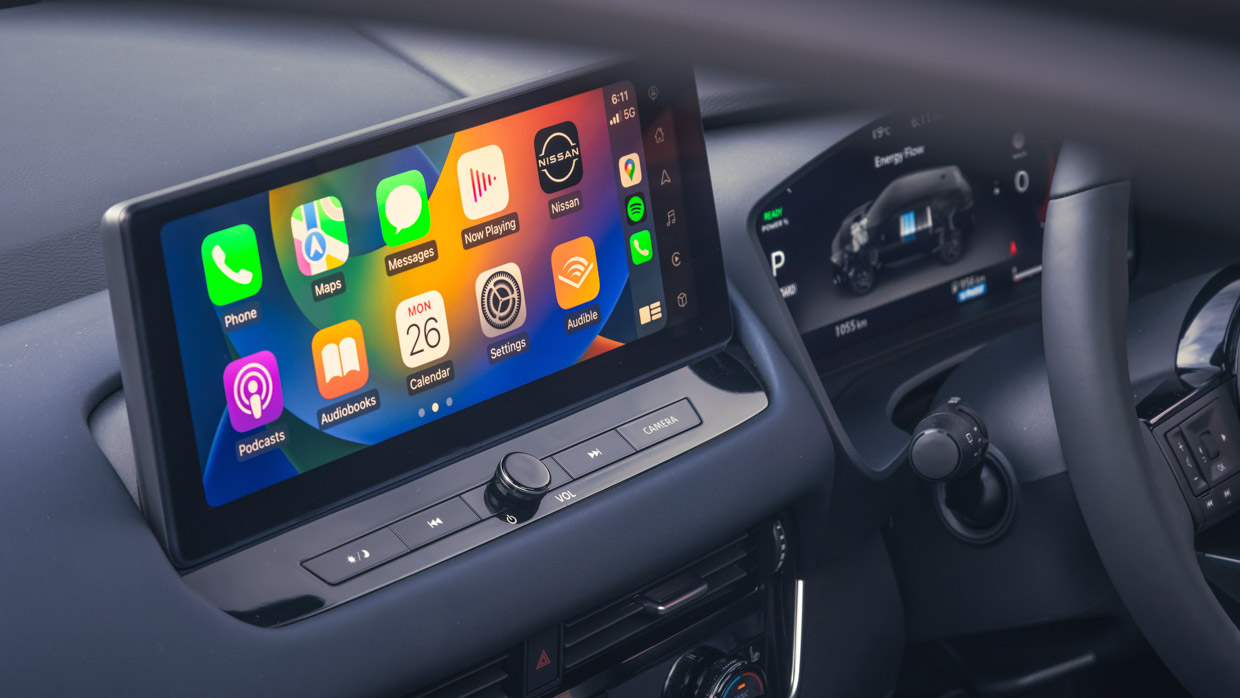
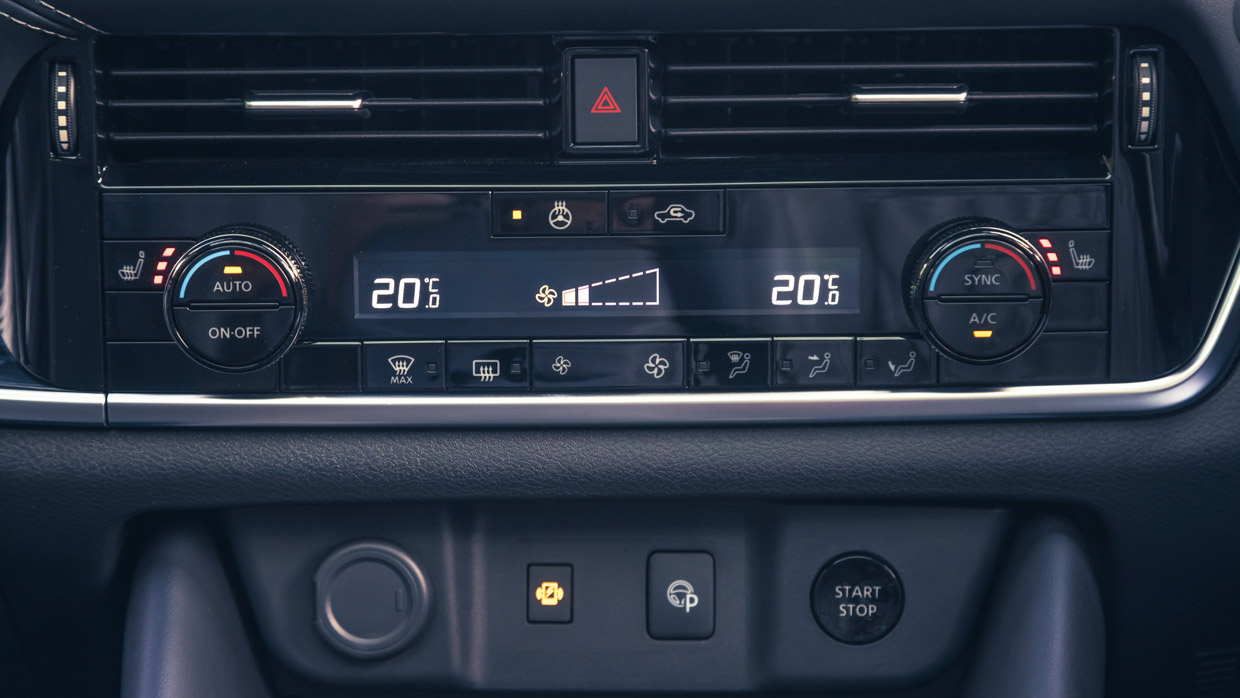
The 15-watt wireless phone charger is a lovely addition but feels wasted for Android Auto users who are still required to plug in their phone to use the phone mirroring function. Thankfully, Apple CarPlay has no such constraints.
A head-up display is also greatly appreciated, as is the 10-speaker Bose premium stereo, which provides a flexible list of talents for a range of music preferences.
Moving to the back seat is certainly more pleasant than most small SUVs. The rear doors are short but open to a wide angle and once you’re inside I found that my 182cm frame I was able to sit behind my own driving position quite comfortably, with ample head, knee and toe room.
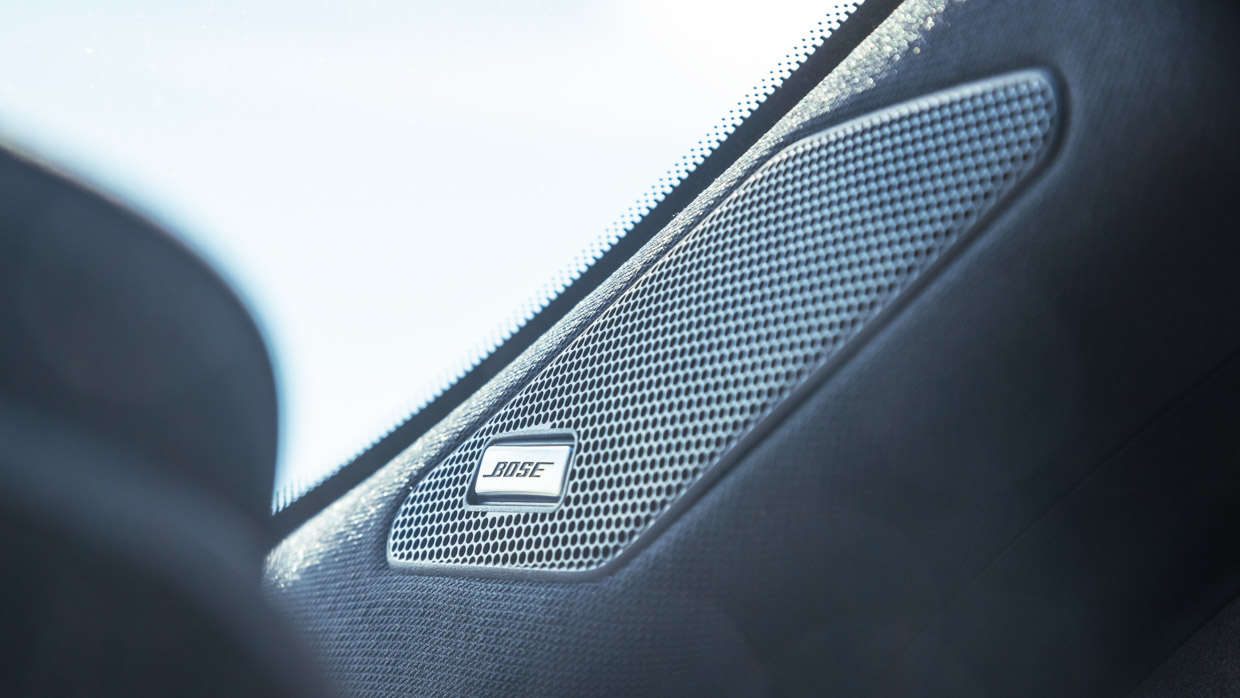
The seat base is situated quite low and underthigh support was lacking, but it’s not too bad for its class.
I’ve previously taken the Qashqai home for an extended period during which I strapped a rearwards-facing baby seat into the second row with surprisingly ease. The wide-opening doors make the process fairly easy and the front passenger seat only required minimal adjustment to make it all fit.
Being a larger vehicle, the X-Trail stablemate is obviously that much easier and more comfortable for rear passengers, but if you want a family car which is more compact, the Qashqai still offers plenty of roominess.
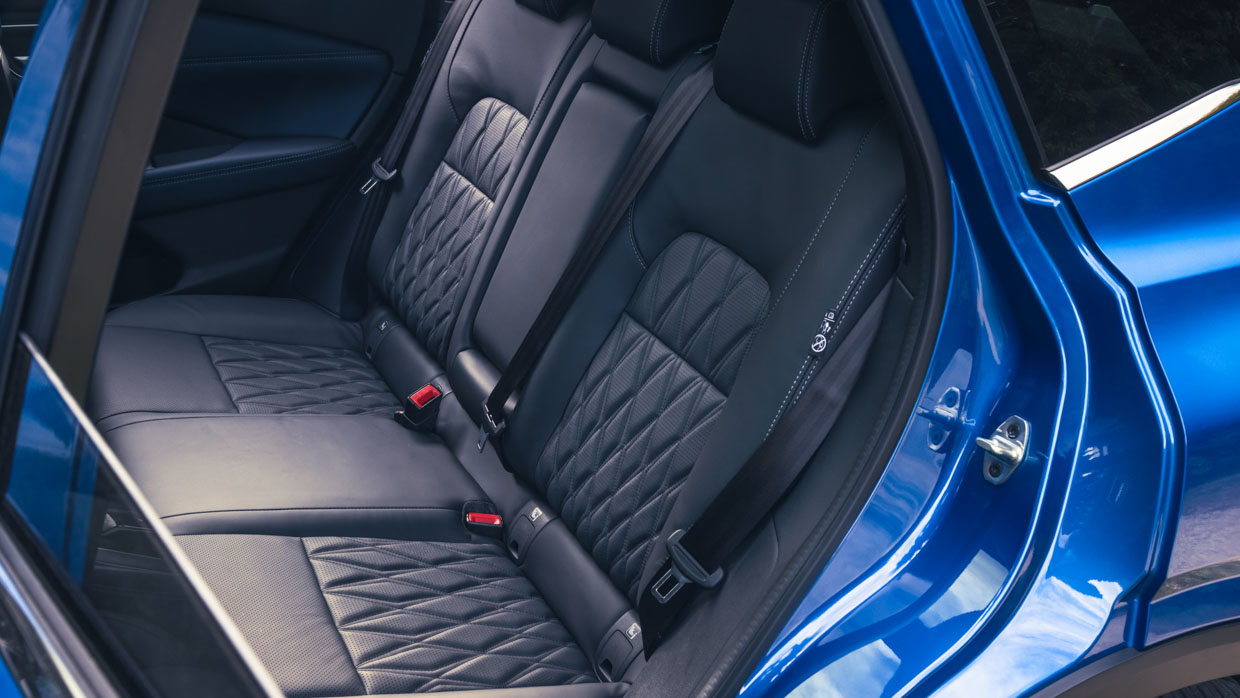
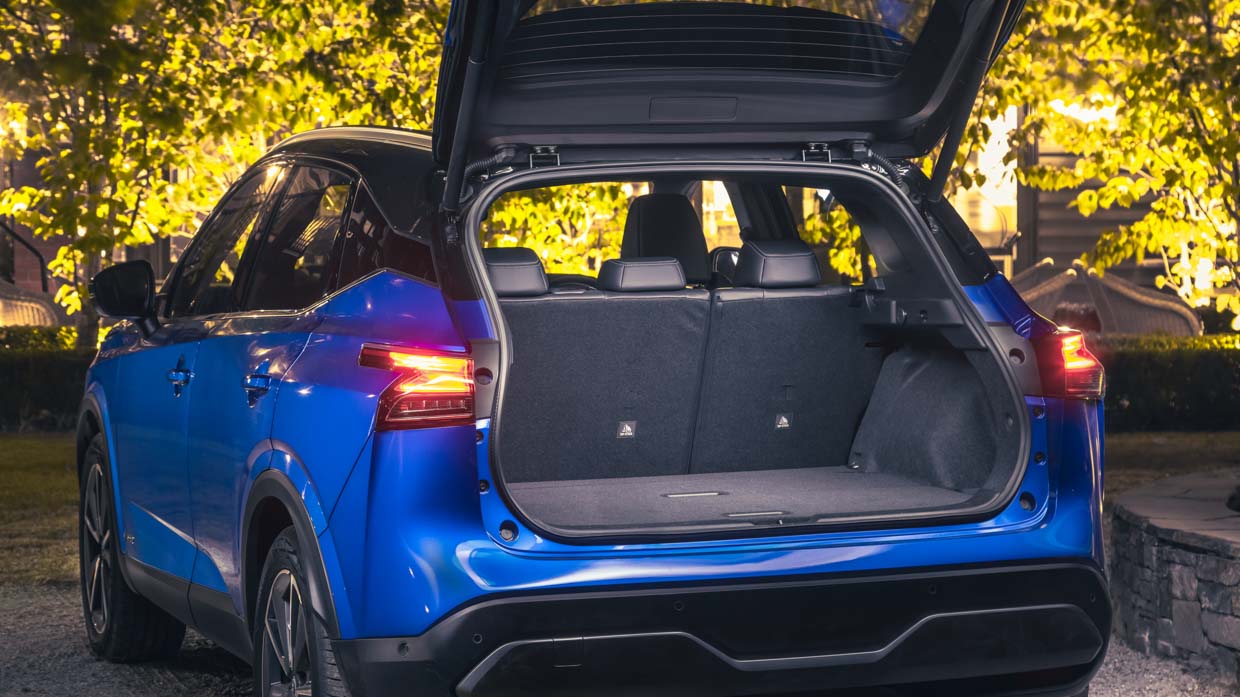
At the rear, the boot can be opened with the key fob, the traditional button or by activating the kick sensor – though after several minutes of flailing about doing what must have looked like a mad man doing the macarena, I was unable to get the bloody thing to work.
The boot itself measures 452L in capacity, making it the largest boot you can get in a Qashqai though sadly this is owing to the fact that the spare wheel has been ditched in favour of a puncture repair kit.
It’s a trade off I’m not sure I’d be willing to make after running into trouble the very first time I drove my X-Trail E-Power long-termer and picked up a puncture. It’s notable that rivals such as the Hyundai Kona hybrid, that do fit spares, have no such trade-offs.
Like the regular Qashqai, the E-Power is sold with a five-star ANCAP rating. When it was tested back in 2021 it achieved the following scores:
All scores earned, bar vulnerable road user protection, are highly commendable and it’s particularly noteworthy that a small SUV such as this is capable of outstanding child protection despite its smaller dimensions.
Also of note are the safety assistance features that don’t just score well in ANCAP’s eyes but also perform well in the real world, providing assistance when you actually need it and staying out of your way when you really don’t.
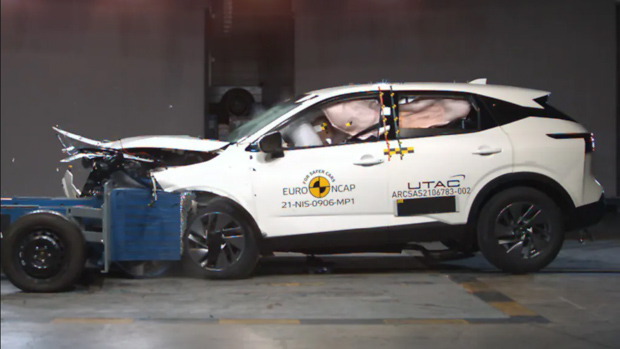
One caveat to that claim is the steering assistance function that forms part of the adaptive cruise control that requires drivers to constantly have their hands placed at nine-and-three, aka either side of the steering wheel.
While this is indeed good practice for drivers in a general sense, on a long trip drivers are more likely to drop their hands to the bottom of the steering wheel, where it seems no sensors are placed.
As a result, the system will decide the driver does not have control of the steering wheel and will beep until your hands return to nine-and-three – or until you turn the feature off.
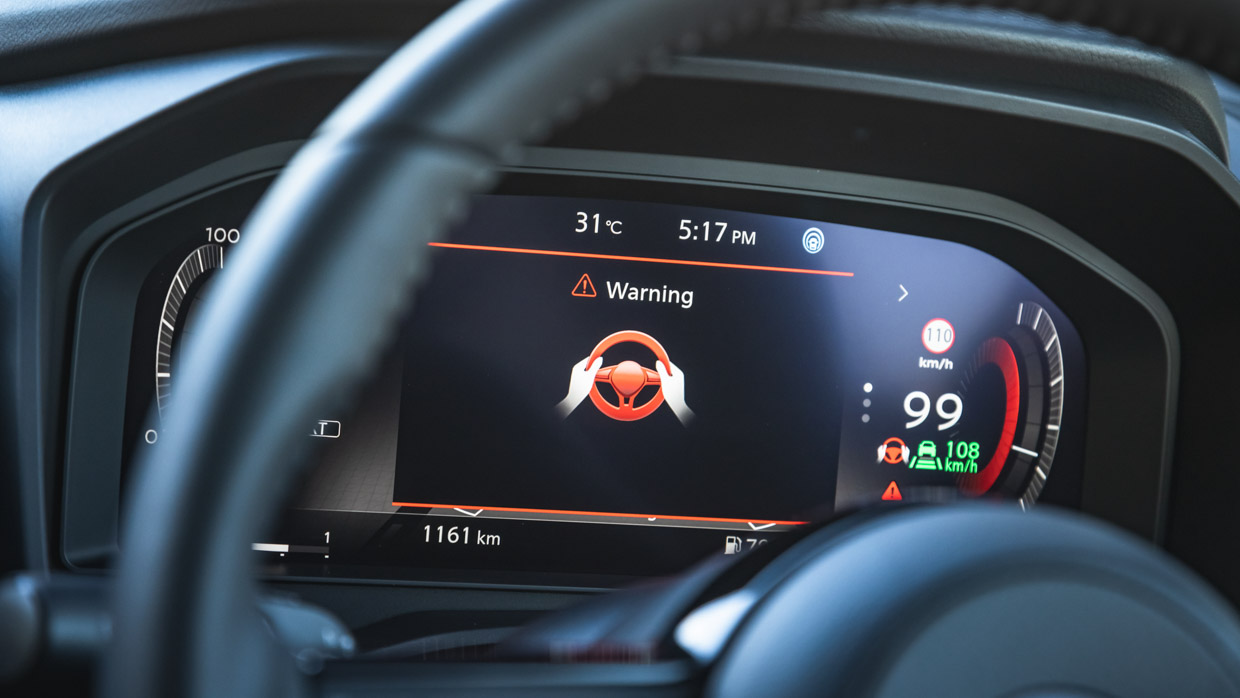
It’s a shame because the steering assistance function itself is very well tuned, but in the end we just switched it off. We’ve detected this same issue in the X-Trail and hope that a fix is made to both in the coming year.
In terms of other included safety features, these include:
If you’re wondering whether opting for the E-Power will decrease your everyday running costs, the good news is that – based on our initial testing – the answer seems to be very much ‘yes’.
Starting with fuel economy; the Qashqai E-Power is officially rated at 5.2L/100km, which isn’t actually all that much lower than the 6.1L/100km quoted for the regular petrol. These however, are just claims. So how does it behave in the real world?
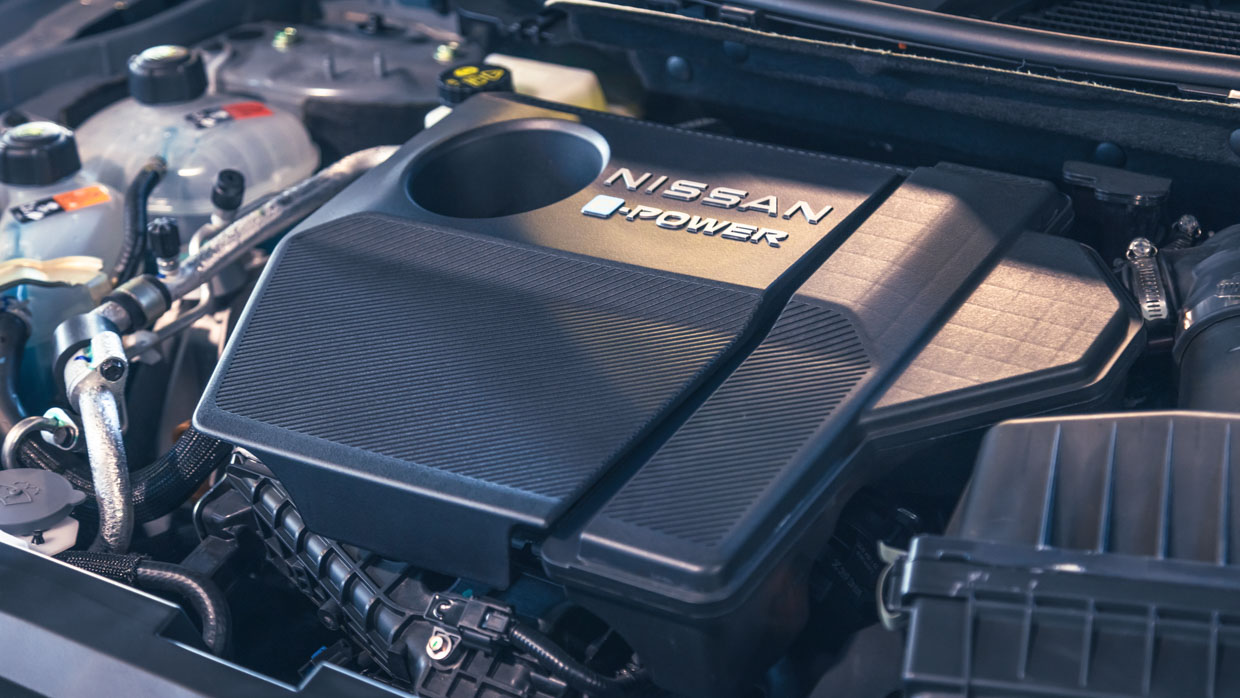
During our initial testing of the Qashqai E-Power we saw an average of 5.5L/100km, which is a bit lower than I expected, especially given that we spent a good portion of our drive on the highway where hybrids are not necessarily at their most efficient.
Compare that to our testing of the pure-petrol Qashqai and we saw around 9.0L/100km in initial testing and then around 8.0L/100km over a longer period. So the difference between the two in reality appears to be more significant than they are on paper.
In terms of warranty, Nissan has offers five-year, unlimited-kilometre coverage and service intervals are every 12 months or 10,000kms – a touch shorter than the 1.3L petrol’s 15,000km pit stops.
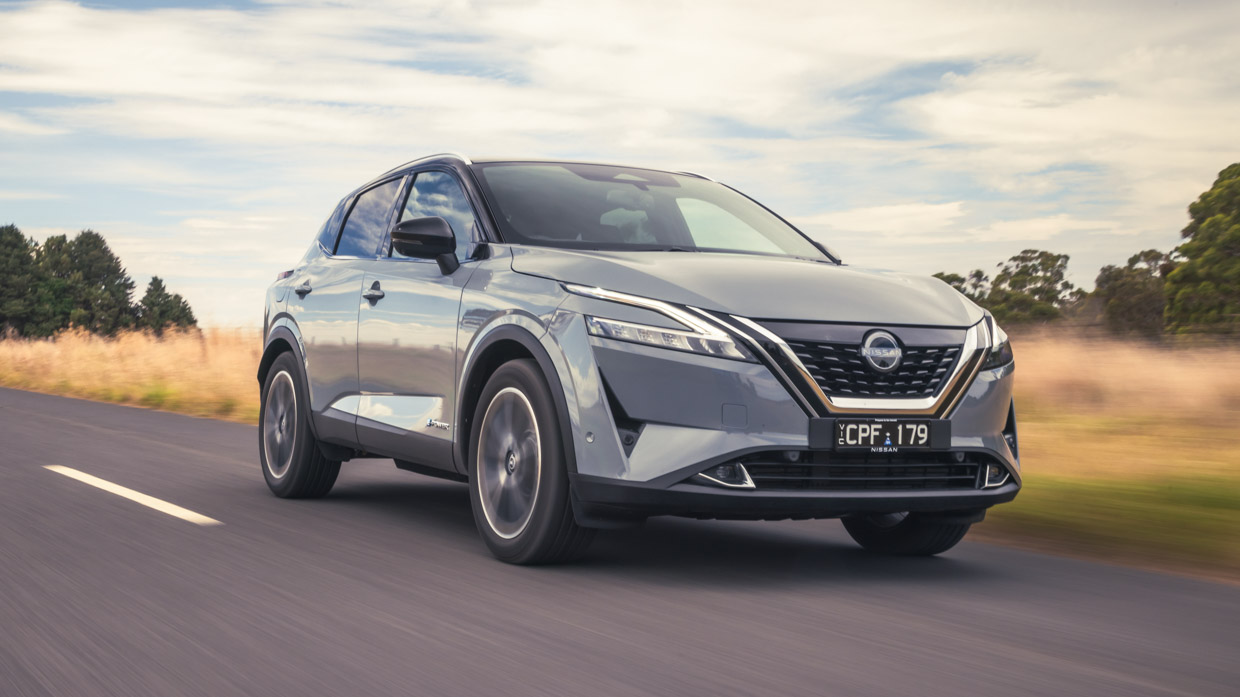
Chasing Cars has previously criticised the Qashqai’s high service pricing and it seems the feedback has been heard. As of January 1, 2024, prices dropped slightly and Nissan has introduced a pre-paid servicing program, which drops the cost burden even further.
And if you’re after the E-Power, the news gets better from here with the cost of ownership over five years and 75,000km costing just $2007 under the pre-paid servicing program, some $572 less than its petrol equivalent.
For those who are hesitant to opt for a fully fledged EV but like the idea of attributes such as the zippy instant torque and hushed powertrain, but aren’t keen on the range anxiety of the EVs at equivalent price points, the Qashqai E-Power is a good option.
If buyers are looking for a highly equipped small SUV that packs all those lovely luxury features, the price of the Qashqai can make sense. In comparison to rivals at a similar price point, the build quality and features list of the Nissan do make it stand out.
Still, the price of the Qashqai range overall is a touch high, though the $4200 step-up to the E-Power over the regular Ti makes sense on paper if you’re already committed to the highly specified version of the Nissan.
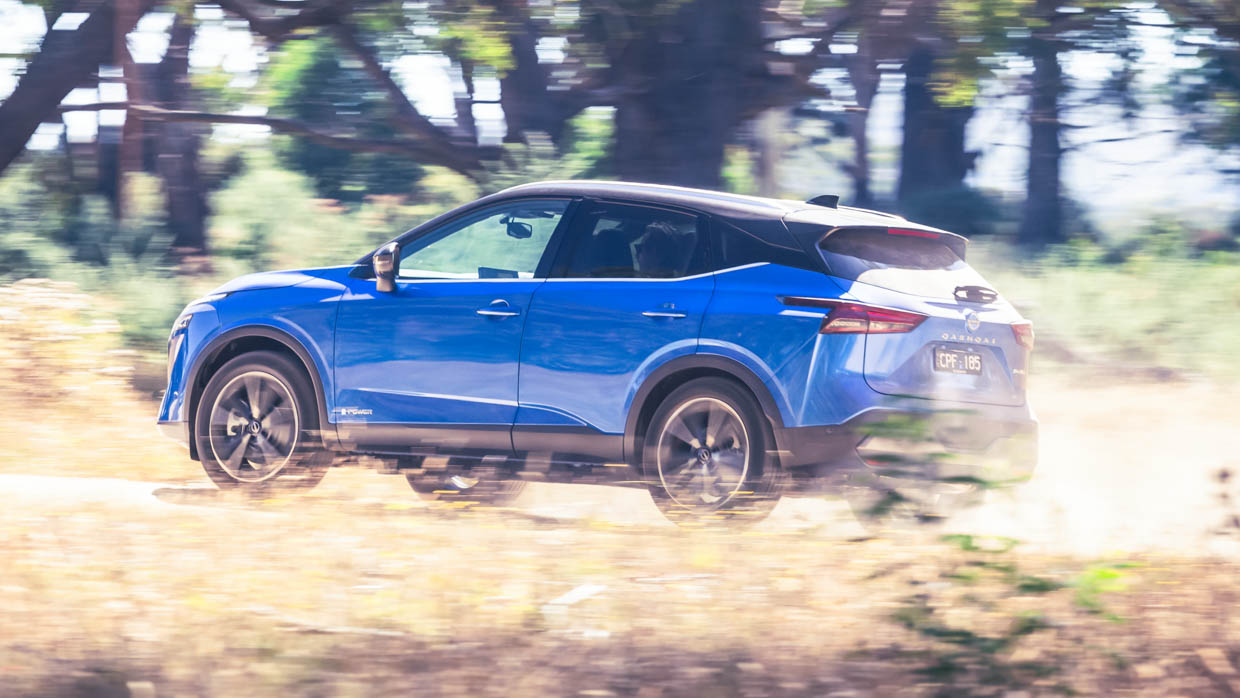
It’s hard to justify, though, that buyers on a budget should stretch to this model when the price works out to just under $55,000 driveaway.
Personally, if I was investing this much cash I’d be more inclined to pay the $3000-odd premium for the similarly-specified yet larger X-Trail Ti E-Power, which not only offers more practicality but also a very good all-wheel-drive system.
The Qashqai Ti E-Power is a good first showing from the Nissan brand for the size and powertrain format. But without the option of more-affordable E-Power grades, the price might deter a good number of buyers keen for this hybrid small SUV model.
Key specs (as tested)
About Chasing cars
Chasing Cars reviews are 100% independent.
Because we are powered by Budget Direct Insurance, we don’t receive advertising or sales revenue from car manufacturers.
We’re truly independent – giving you Australia’s best car reviews.
The estimate provided does not take into account your personal circumstances but is intended to give a general indication of the cost of insurance, in order to obtain a complete quote, please visit www.budgetdirect.com.au. Estimate includes 15%^ online discount.
^Conditions Apply
Budget Direct Insurance arranged by Auto & General Services Pty Ltd ACN 003 617 909(AGS) AFSL 241 411, for and on behalf of the insurer, Auto & General Insurance Company Limited(ABN 42 111 586 353, AFSL 285 571).Because we don’t know your financial needs, we can’t advise you if this insurance will suit you. You should consider your needs and the Product Disclosure Statement before making a decision to buy insurance. Terms and conditions apply.
Indicative quote based on assumptions including postcode , 40 year old male with no offences, licence suspensions or claims in the last 5 years, a NCD Rating 1 and no younger drivers listed. White car, driven up to 10,000kms a year, unfinanced, with no modifications, factory options and/or non-standard accessories, private use only and garaged at night.
^Online Discounts Terms & Conditions
1. Discounts apply to the premium paid for a new Budget Direct Gold Comprehensive Car Insurance, Third Party Property Only or Third Party Property, Fire & Theft Insurance policy initiated online on or after 29 March 2017. Discounts do not apply to optional Roadside Assistance.
2. Discounts do not apply to any renewal offer of insurance.
3. Discounts only apply to the insurance portion of the premium. Discounts are applied before government charges, taxes, levies and fees, including instalment processing fees (as applicable). The full extent of discounts may therefore be impacted.
4. We reserve the right to change the offer without notice.